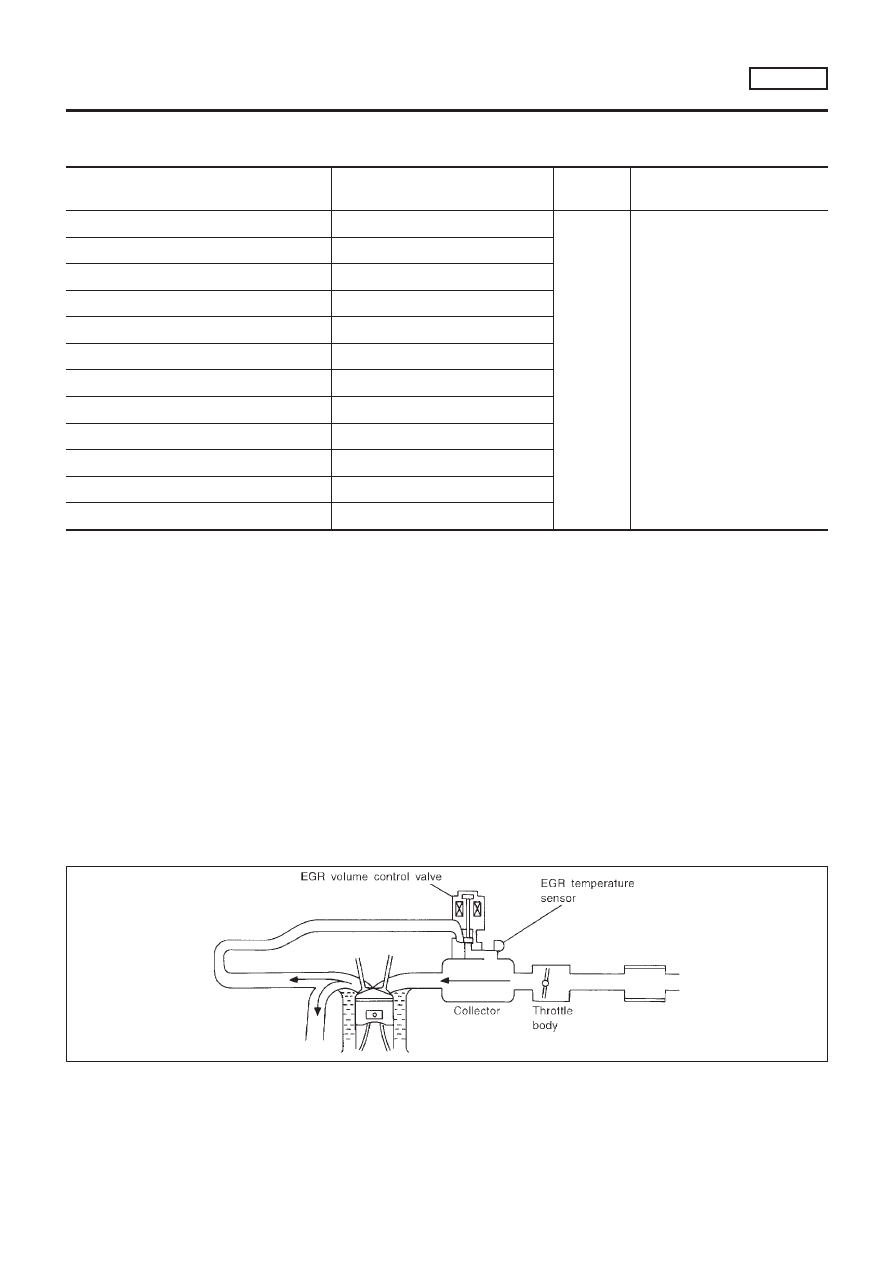Nissan Almera Tino V10 (2001 year). Manual - part 80

Description
NLEC1553
SYSTEM DESCRIPTION
NLEC1553S01
Sensor
Input Signal to ECM
ECM func-
tion
Actuator
Crankshaft position sensor
Engine speed
EGR vol-
ume control
EGR volume control valve
Mass air flow sensor
Amount of intake air
Engine coolant temperature sensor
Engine coolant temperature
Ignition switch
Start signal
Throttle position sensor
Throttle position
Vehicle speed sensor
Vehicle speed
Battery
Battery voltage
Air conditioner switch
Air conditioner operation
Power steering oil pressure switch
Power steering load signal
Electrical load
Electrical load signal
PNP switch
Park/Neutral position signal
TCM (Transmission Control Module)
Gear position, shifting signal
This system controls flow rate of EGR led from exhaust manifold
to intake manifold. The opening of the EGR by-pass passage in the
EGR volume control valve changes to control the flow rate. A
built-in step motor moves the valve in steps corresponding to the
ECM output pulses. The opening of the valve varies for optimum
engine control. The optimum value stored in the ECM is determined
by considering various engine conditions. The EGR volume control
valve remains close under the following conditions.
+
Low engine coolant temperature
+
Engine starting
+
High-speed engine operation
+
Extremely light load engine operation
+
Engine idling
+
Excessively high engine coolant temperature
+
Wide open throttle
+
Mass air flow sensor malfunction
+
Low battery voltage
SEF551W
DTC P0403 EGR VOLUME CONTROL VALVE (CIRCUIT)
(WHERE FITTED)
SR20DE
Description
EC-841